Gangwon (강원, 江原,) is a province in the northeastern corner of South Korea, bordering North Korea and having a long coast along the East Sea (Sea of Japan). Remote and off the traditional tourist trail, the region is relatively undeveloped being 82% mountainous and only sparsely populated. The northern border is sealed off by the Korean DMZ, with the Geumgangsan Diamond Mountains and Mount Baekdusan in North Korea close by. The beauty of Gangwondo's four seasons radiates even more against the rich natural environment here, with many leisure activities available each season. During the winter snow falls, the Gangwon-do mountains become a skiing paradise. The town of Pyeongchang was the host city of the 2018 Winter Olympics.
Gangwon is sparsely populated, and many settlements in the list below are better described as large villages or towns rather than large cities.
- Chuncheon. - Capital city of Gangwon-do.
- Donghae. - Port city
- Jeongdongjin. - Famous sea coast in Donghae-si
- Gangneung.
- Jumunjin.
- Samcheok.
- Sokcho. - Coastal town close to the DMZ and gateway to the Seoraksan National Park
- Taebaek.
- Wonju. - city with an airport
- Yangyang. - Remote coastal town with an airport
Chuncheon. - Capital city of Gangwon-do.
Donghae. - Port city
- Jeongdongjin. - Famous sea coast in Donghae-si
Donghae. - Port city
- Jeongdongjin. - Famous sea coast in Donghae-si
Gangneung.
Jumunjin.
Samcheok.
Sokcho. - Coastal town close to the DMZ and gateway to the [[Seoraksan_National_Park|Seoraksan National Park]]
Taebaek.
Wonju. - city with an airport
Yangyang. - Remote coastal town with an airport
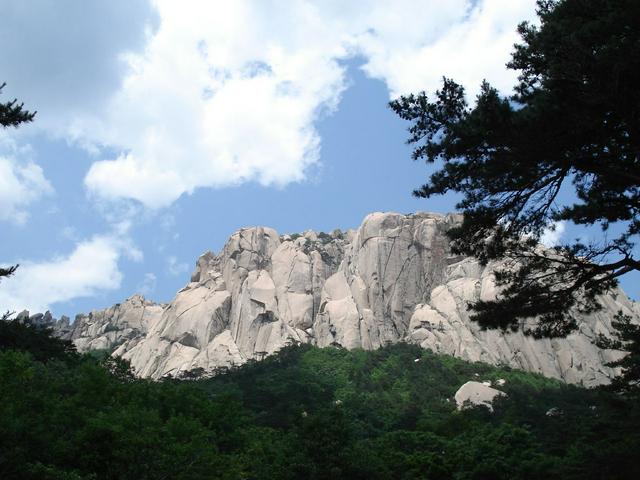 National parks:
National parks:
- Seoraksan National Park. One of the tourist attractions overseas visitors consider the most memorable is Seoraksan. Outer Seoraksan has fantastic cliffs and big fountains, while the beautiful inner Seoraksan exhibits the highest level of splendor and sensation by displaying various forms and colors that nature can offer during the four seasons. The Seoraksan Mountains have multiple hiking courses, valleys, and cultural artifacts hidden in each valley, and are internationally renowned as a habitat for rare plants and animals. UNESCO designated the region in 1992 as a Biosphere Reserve.
- Odaesan National Park. is to the south of Seoraksan national park. Odaesan (오대산) (Odae Mountain) is considered one of the most beautiful mountains in South Korea. Odae Mountain is located at the divergence of Baekdu Mountains and Charyeong Mountains across yeongchanggun, Hongcheon gun and Gangneung city. The name of Odae was given by Jajangyoolsa who was a sainted Buddhist monk during the Silla Dynasty. There are Dongdaesan (Hangul: 동대산, - means the name of small mountain) on the east, Durobong (Hangul: 두로봉, - bong means 'peak of mountain') on the west, Sangwangbong (Hangul: 상왕봉) on the south, Virobong (Hangul: 비로봉) on the north, and Horyeongbong (Hangul: 호령봉) at the center. The park was first established in 1970 as a scenic spot of the River Sogum, and then in 1975 as a national park of Korea. The area of the park was extended again in 2011.
- Chiaksan National Park. Centering around Birobong that stands at 1,288 meters above sea level are other peaks up to 1,000 meters. Mt. Chiaksan with its steep cliffs and solemn physical aspects is a sharp contrast to the smooth, feminine Mt. Odaesan. You can find precious elements of the regional cultural heritage such as beautiful valleys, Sinseondae, Guryongso, Seryeom Falls and Sangwonsa Temple. The park changes color as the seasons pass: azalea and royal azalea in spring, thick forest in summer, red maples in autumn and snow in winter.
- Teabeaksan National Park. As Gangwon is relatively sparsely populated, many locations are better described as counties rather than towns or cities.
Counties that border North Korea (The Korean Demilitarized Zone):
Other counties:
- Cheorwon. is a district along a remote part of the DMZ border with North Korea and has many DMZ attractions to see.
- Yanggu. is another district along the border with a deep connection to the Korean war.
- Pyeongchang. - Ski resort and the host city of the 2018 Winter Olympics.
- Goseong.
- Hwacheon.
- Inje. - White water rafting and other mountain activities
- Jeongseon.
- Yeongwol.
- Gwandong Palgyeong - 8 Landscapes
Seoraksan National Park. One of the tourist attractions overseas visitors consider the most memorable is Seoraksan. Outer Seoraksan has fantastic cliffs and big fountains, while the beautiful inner Seoraksan exhibits the highest level of splendor and sensation by displaying various forms and colors that nature can offer during the four seasons. The Seoraksan Mountains have multiple hiking courses, valleys, and cultural artifacts hidden in each valley, and are internationally renowned as a habitat for rare plants and animals. UNESCO designated the region in 1992 as a Biosphere Reserve.
Odaesan National Park. is to the south of Seoraksan national park. Odaesan (오대산) (Odae Mountain) is considered one of the most beautiful mountains in South Korea. Odae Mountain is located at the divergence of Baekdu Mountains and Charyeong Mountains across yeongchanggun, Hongcheon gun and Gangneung city. The name of Odae was given by Jajangyoolsa who was a sainted Buddhist monk during the Silla Dynasty. There are Dongdaesan (Hangul: 동대산, - means the name of small mountain) on the east, Durobong (Hangul: 두로봉, - bong means 'peak of mountain') on the west, Sangwangbong (Hangul: 상왕봉) on the south, Virobong (Hangul: 비로봉) on the north, and Horyeongbong (Hangul: 호령봉) at the center. The park was first established in 1970 as a scenic spot of the River Sogum, and then in 1975 as a national park of Korea. The area of the park was extended again in 2011.
Chiaksan National Park. Centering around Birobong that stands at 1,288 meters above sea level are other peaks up to 1,000 meters. Mt. Chiaksan with its steep cliffs and solemn physical aspects is a sharp contrast to the smooth, feminine Mt. Odaesan. You can find precious elements of the regional cultural heritage such as beautiful valleys, Sinseondae, Guryongso, Seryeom Falls and Sangwonsa Temple. The park changes color as the seasons pass: azalea and royal azalea in spring, thick forest in summer, red maples in autumn and snow in winter.
Teabeaksan National Park.
Cheorwon. is a district along a remote part of the [[DMZ (Korea)|DMZ]] border with [[North Korea]] and has many DMZ attractions to see.
Yanggu. is another district along the border with a deep connection to the Korean war.
Pyeongchang. - Ski resort and the host city of the [[Wikivoyage:Past_events/Pyeongchang_2018|2018 Winter Olympics]].
Goseong.
Hwacheon.
Inje. - White water rafting and other mountain activities
Jeongseon.
Yeongwol.
- Korea Travel Hotline & Complaint Center, +82 2-1330. 00:00-23:59. Support Korean, English, Chinese, Japanese to announcing tour information, complaints and emergency calls. Free of Charge.
- Gangwon Tourist Information Office, 19, Chuncheon-ro, Chuncheon-si, Gangwon-do, +82 33-244-0088. 09:00-18:00. Free.
- Gangwon Tourist Information Office, 330, Gyeongpo-ro. Gangneung-si, Gangwon-do, +82 33-640-4531. 09:00-18:00. Free.
Korea Travel Hotline & Complaint Center, +82 2-1330. 00:00-23:59. Support Korean, English, Chinese, Japanese to announcing tour information, complaints and emergency calls. Free of Charge.
Gangwon Tourist Information Office, 19, Chuncheon-ro, Chuncheon-si, Gangwon-do, +82 33-244-0088. 09:00-18:00. Free.
Gangwon Tourist Information Office, 330, Gyeongpo-ro. Gangneung-si, Gangwon-do, +82 33-640-4531. 09:00-18:00. Free.
Many parts of the region are remote, and English isn't widely understood there. Traveling in this region is much easier if you can read and speak Korean. Or call the 1330, its travelling Translate Hotline.
Many Koreans enjoy seeing sunrise on the New Year's day in the eastern side. Gangawon has many famous spots for the ceremony, including Jeongdongjin and Gyeongpo Beach in Gangneung.
Thanks to the rocky landscape, many historical Buddhist temples have survived in the region. Woljeongsa in Pyeongchang is famous with its beautiful nine-story stone pagoda. Oseam in Inje has a legend that Buddha helped a kid to survive in heavy snowfall, which inspired a movie and an animated film. Naksansa in Yangyang is located on the slope of Obongsan Mountian, and you can enjoy the sea at Uisangdae Pavilion built on the top of a cliff.
Koreans have been built pavilions to enjoy beautiful landscapes. They sometimes wrote poems that praised the beauty of the nature there, with viewing the sea, the moon and streams. Especially, eight spots along the east seacoast of Korea have been thought to be attractive and enjoyable, and called Gwandong Palgyeong.
-cYtng.medium.jpg)
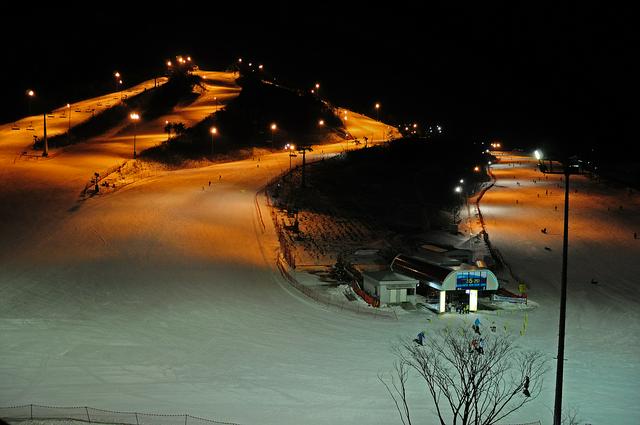
The DMZ (Demilitarized zone) is the dividing line set up according to the Korean War cease-fire agreement on June 27, 1953. It is a buffer zone to stave off hostilities between North and South. Military activity or equipment is prohibited in strip of land four kilometers wide that runs the width of the entire peninsula and constitutes approximately 0.5 percent of Korean territory North and South. The United Nations Committee of Military Administration manages the Southern half of the DMZ. DMZ tours offer visitors a chance see how time has been at a standstill for the past half century. In Gangwon-do, DMZ tours are available in Cheorwon at the far West of the province, in Yanggu county in the center, and on the East coast at Goseong, about 50km North of Sokcho.
You can go rafting in the Naerincheon region and in the Donggang river in Yeongwol. Good places for hiking, a popular Korean pastime, include the Naerincheon riverside and the region around Wondaegyo. The latter is also a destination for mountain bikers. For those who want to try out being a bird for a while, the Habgangjeong region offers paragliding at Mount Giryong and bungee jumping.
Gangwon-do offers a range of hot springs for you to enjoy, such as Seorak Hanwha Waterpia in Sokcho.
- Daemyung Resort Seorak Aqua World. Daemyung Resort Sorak’s most recognizable facility is the 1.6 ac. Hot Spring Theme Park. It has various hot spring baths, including a high-tech bath that provides different massages with different flows of hot spring water, an outdoor bath, a Jasmine bath, a pine tree bath (Hinoki bath), and others. Sorak Aqua World also provides special attractions, such as an outdoor recreational pool surrounded by the beauty of Mt. Seoraksan, special barbeque parties in summer season, and world-famous Thai massages.
- Seorak Pine Resort. ‘Garden Spa,’ an outdoor bath of Seorak Pine Resort, is equipped with various hot spring baths, high-tech sauna and massage rooms, and a world-class indoor pool. It is well-known for hot spring baths that use various herbs, such as green tea, angelica, mint, and many more, a “lover’s bath” scented with lemon, and a waterfall bath that provides massages under natural waterfalls.
Daemyung Resort Seorak Aqua World. Daemyung Resort Sorak’s most recognizable facility is the 1.6 ac. Hot Spring Theme Park. It has various hot spring baths, including a high-tech bath that provides different massages with different flows of hot spring water, an outdoor bath, a Jasmine bath, a pine tree bath (Hinoki bath), and others. Sorak Aqua World also provides special attractions, such as an outdoor recreational pool surrounded by the beauty of Mt. Seoraksan, special barbeque parties in summer season, and world-famous Thai massages.
Seorak Pine Resort. ‘Garden Spa,’ an outdoor bath of Seorak Pine Resort, is equipped with various hot spring baths, high-tech sauna and massage rooms, and a world-class indoor pool. It is well-known for hot spring baths that use various herbs, such as green tea, angelica, mint, and many more, a “lover’s bath” scented with lemon, and a waterfall bath that provides massages under natural waterfalls.
- Yeongwol Danjong Festival, +82 33 375-6353. Early April, for three days. The Ministry of Culture and Tourism gave a special designation to the Yeongwol Danjong Festival. It is held to console the spirits of King Danjong, whose life ended in a tragedy after exile by King Sejo, the sixth king of the Joseon Dynasty, and his followers who sacrificed their lives. The festival starts with a commemorative funeral followed by a parade honoring King Danjong's life, and a traditional marriage.
- Hoengseong Hanu Festival. September. Hoengseong is famous for Korean beef (Hanu), made from cattle who are easy to breed in this climate. You can enjoy the taste of Hanu and also buy it. There are also many other thing to do at the festival. For example, you can wear traditional Korean costumes and enjoy a foot bath.
Yeongwol Danjong Festival, +82 33 375-6353. Early April, for three days. The Ministry of Culture and Tourism gave a special designation to the Yeongwol Danjong Festival. It is held to console the spirits of King Danjong, whose life ended in a tragedy after exile by King Sejo, the sixth king of the Joseon Dynasty, and his followers who sacrificed their lives. The festival starts with a commemorative funeral followed by a parade honoring King Danjong's life, and a traditional marriage.
Hoengseong Hanu Festival. September. Hoengseong is famous for Korean beef (Hanu), made from cattle who are easy to breed in this climate. You can enjoy the taste of Hanu and also buy it. There are also many other thing to do at the festival. For example, you can wear traditional Korean costumes and enjoy a foot bath.
Gangwon is a famous place for skiing. In Gangwon, there are many mountains and also much snow in winter, so there are many ski resorts in the area. Normally ski resorts open at November and close at March. One of that is Oakvalley ski resort. Oakvalley ski resort is located in Wonju. They manage the shuttle bus from Seoul to the resort.
- Oakvalley ski resort, 66, Oak Valley 1-gil, Jijeong-myeon, Wonju-si. You can enjoy at the oakvalley resrot not only ski but also golf. Oakvalley resort has three types of slope. There are 2 slopes of beginner level, 5 slopes of normal level and 2 slopes of expert level. Oakvalley resort manages ski school and snow board school. Thare is also Sledding slope for children, woh can not do ski or snow board.
- Alpensia Resort, 325, Solbong-ro, Pyeongchang-gun, +82 33-339-0000. Opened year-round. You can enjoy ski slopes as well as a golf course and an indoor water park, staying in luxurious accommodations. It hosts skiing events for the 2018 Winter Olympic Games.
- Phoenix Pyeongchang park.
- Vivaldi park.
- Welli hilli park.
- High one ski resort.
Oakvalley ski resort, 66, Oak Valley 1-gil, Jijeong-myeon, Wonju-si. You can enjoy at the oakvalley resrot not only ski but also golf. Oakvalley resort has three types of slope. There are 2 slopes of beginner level, 5 slopes of normal level and 2 slopes of expert level. Oakvalley resort manages ski school and snow board school. Thare is also Sledding slope for children, woh can not do ski or snow board.
Alpensia Resort, 325, Solbong-ro, Pyeongchang-gun, +82 33-339-0000. Opened year-round. You can enjoy ski slopes as well as a golf course and an indoor water park, staying in luxurious accommodations. It hosts skiing events for the [[Wikivoyage:Past_events/Pyeongchang 2018|2018 Winter Olympic Games]].
Phoenix Pyeongchang park.
Vivaldi park.
Welli hilli park.
High one ski resort.
Some of the regional dishes are:
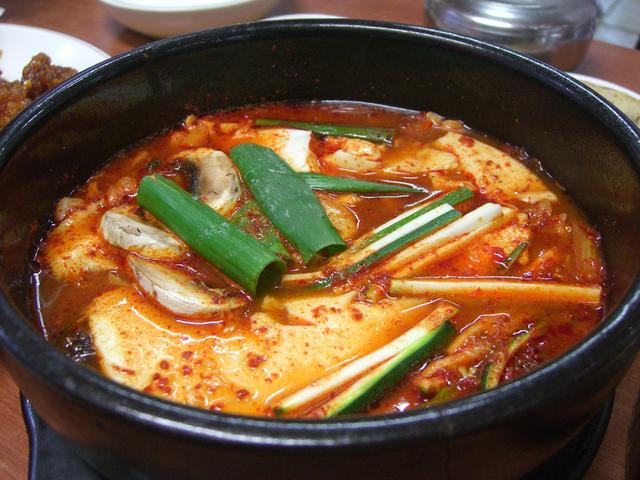
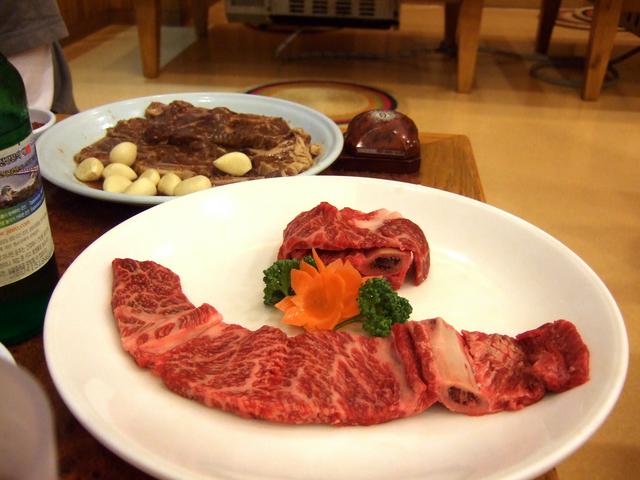
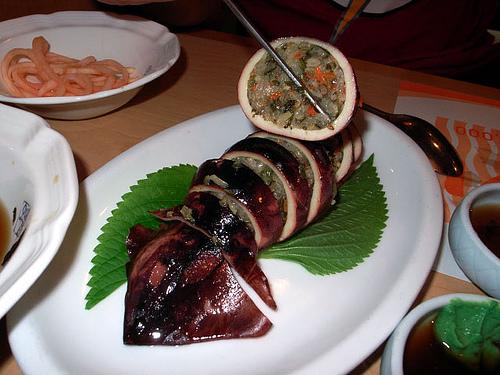

- Sundubu (순두부): Made from the clean water of the Seoraksan Mountains and salt from the East Sea, Sundubu, Korean-style silken tofu, has a mild, sleek and delicious flavor. A truly gourmet dish. Try Sokcho's Haksapyeong Sundubu Village and the Sinheung's Sundubu Stew Village.
- Chobap (초밥): The best chobab, Korean-style sushi, is from fish caught at dawn and eaten right away. Gangwon's East coast offers many fresh fish markets. Once you try fresh raw fish, you will become an ardent fan. Excellent sushi can be found Sokcho's Daepo Port, just past the international ferry terminal, and around Dongmyeong Port.
- Roasted Hwangtae (황태):Hwangtae is salt-removed Pollack dried in a cool, dry place. Gangwon-do takes pride in the best hwangtae in Korea, properly dried by adequate wind and cold. It is cooked in a hot cauldron with special spices and condiments. It is also called "yellow pollack" for its color after washing and drying the pollack that was salt-dried during winter.
- Bibimbap (비빔밥) and Sanchaejeongsik (산채정식):Bibimbap is a mouth-watering dish of boiled rice and various greens and vegetables, sometimes meat, and peppered to your taste with spicy sauce which you mix yourself in a large bowl. Sanchaejeongsik (Rice with mixed wild vegetables) is a particular kind of Bibimbap that uses vegetables picked out in the mountains, small restaurants in rural areas of Gangwon-do often have the best Sanchaejeongsik in all of Korean.
- Hongcheon hwarosutbulgui (홍천 화로숫불고기):This is pork flavored with 20 different types of spices and charcoal broiled. People of all ages love this cuisine for its abundant spices and non-greasy flavor.
- Chodang Sundubu (초당 순두부):Sundubu stew is made of soft bean curd, famous for its delicate taste and flavored with salt from the East Sea. The sundubu is cooked from early in the morning, so soft it melts in your mouth. Try restaurants in Gangneung's Chodang-dong district.
- Chuncheon Dalk-galbi (춘천닭갈비):A spicy barbecue chicken dish where the cook grills richly flavored chicken with fresh vegetables on a steel plate in front of the customers. Each restaurant has its secret formula of spices. While the best Chuncheon chicken can be found only in Chuncheon, many restaurants throughout Gangwon-do offer both Chuncheon-style, and their own regional variations of this dish.
- Chuncheon Makguksu (춘천막국수):Chuncheon Makguksu is made of buckwheat instead of flour and flavored with spicy condiments. It stimulates your appetite and enhances the beauty of your skin. à Usually sold at barbecue spicy chicken restaurants
- Korean beef (한우): Korean beef in Gangwon is famous in Korea. Gangwon province is good place to breed the cow for beef because of their environment. There is famous Korean beef festival in September or October in Hoengseong.
- Sujebi (clear soup with dumplings) (수제비): Sujebi is a traditional Korean clear soup with dumplings. Potato is a specialty of Gangwon, so there are many potato dishes there, including Potato Sujebi.
- Sundae squid (오징어순대): Sundae is a kind of Korean-style sausage. Sokcho is famous about Sundae squid because Sokcho is a port and squid is Sokcho`s specialty. The Sundae squid wrapped by squid. when you visit Sokcho or other port cities in Gangwon,you can find many restaurant, which sell Sundae squid so you can try Sundae squid.
- Cold Raw Fish Soup (물회): There are many port cities in Gangwon, so sashimi is famous in Gangwon. Cold Raw Fish Soup is sashimi with special soup. Its ingredients include many vegetables, special sauce (normally spicy sauce), and special soup. Normally Korean people enjoy the Cold Raw Fish Soup with a bowl of rice.
Sundubu (순두부): Made from the clean water of the Seoraksan Mountains and salt from the East Sea, Sundubu, Korean-style silken tofu, has a mild, sleek and delicious flavor. A truly gourmet dish. Try Sokcho's Haksapyeong Sundubu Village and the Sinheung's Sundubu Stew Village.
Chobap (초밥): The best chobab, Korean-style sushi, is from fish caught at dawn and eaten right away. Gangwon's East coast offers many fresh fish markets. Once you try fresh raw fish, you will become an ardent fan. Excellent sushi can be found Sokcho's Daepo Port, just past the international ferry terminal, and around Dongmyeong Port.
Roasted Hwangtae (황태):Hwangtae is salt-removed Pollack dried in a cool, dry place. Gangwon-do takes pride in the best hwangtae in Korea, properly dried by adequate wind and cold. It is cooked in a hot cauldron with special spices and condiments. It is also called "yellow pollack" for its color after washing and drying the pollack that was salt-dried during winter.
Bibimbap (비빔밥) and Sanchaejeongsik (산채정식):Bibimbap is a mouth-watering dish of boiled rice and various greens and vegetables, sometimes meat, and peppered to your taste with spicy sauce which you mix yourself in a large bowl. Sanchaejeongsik (Rice with mixed wild vegetables) is a particular kind of Bibimbap that uses vegetables picked out in the mountains, small restaurants in rural areas of Gangwon-do often have the best Sanchaejeongsik in all of Korean.
Hongcheon hwarosutbulgui (홍천 화로숫불고기):This is pork flavored with 20 different types of spices and charcoal broiled. People of all ages love this cuisine for its abundant spices and non-greasy flavor.
Chodang Sundubu (초당 순두부):Sundubu stew is made of soft bean curd, famous for its delicate taste and flavored with salt from the East Sea. The sundubu is cooked from early in the morning, so soft it melts in your mouth. Try restaurants in Gangneung's Chodang-dong district.
Chuncheon Dalk-galbi (춘천닭갈비):A spicy barbecue chicken dish where the cook grills richly flavored chicken with fresh vegetables on a steel plate in front of the customers. Each restaurant has its secret formula of spices. While the best Chuncheon chicken can be found only in Chuncheon, many restaurants throughout Gangwon-do offer both Chuncheon-style, and their own regional variations of this dish.
Chuncheon Makguksu (춘천막국수):Chuncheon Makguksu is made of buckwheat instead of flour and flavored with spicy condiments. It stimulates your appetite and enhances the beauty of your skin. à Usually sold at barbecue spicy chicken restaurants
Korean beef (한우): Korean beef in Gangwon is famous in Korea. Gangwon province is good place to breed the cow for beef because of their environment. There is famous Korean beef festival in September or October in [[Hoengseong]].
Sujebi (clear soup with dumplings) (수제비): Sujebi is a traditional Korean clear soup with dumplings. Potato is a specialty of Gangwon, so there are many potato dishes there, including Potato Sujebi.
Sundae squid (오징어순대): Sundae is a kind of Korean-style sausage. [[Sokcho]] is famous about Sundae squid because [[Sokcho]] is a port and squid is Sokcho`s specialty. The Sundae squid wrapped by squid. when you visit Sokcho or other port cities in Gangwon,you can find many restaurant, which sell Sundae squid so you can try Sundae squid.
Cold Raw Fish Soup (물회): There are many port cities in Gangwon, so sashimi is famous in Gangwon. Cold Raw Fish Soup is sashimi with special soup. Its ingredients include many vegetables, special sauce (normally spicy sauce), and special soup. Normally Korean people enjoy the Cold Raw Fish Soup with a bowl of rice.
- The province of Gyeonggi with the national capital of Seoul to the west
- The cultural sights of North Gyeongsang to the south
- Take a ferry to from Donghae port to Vladivostok in the far east of Russia
